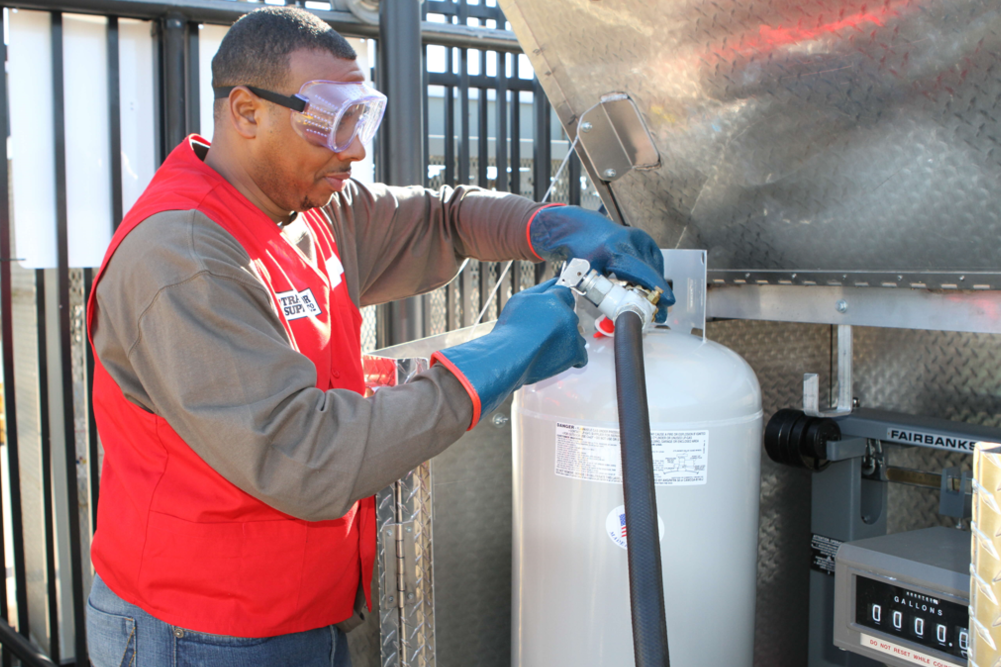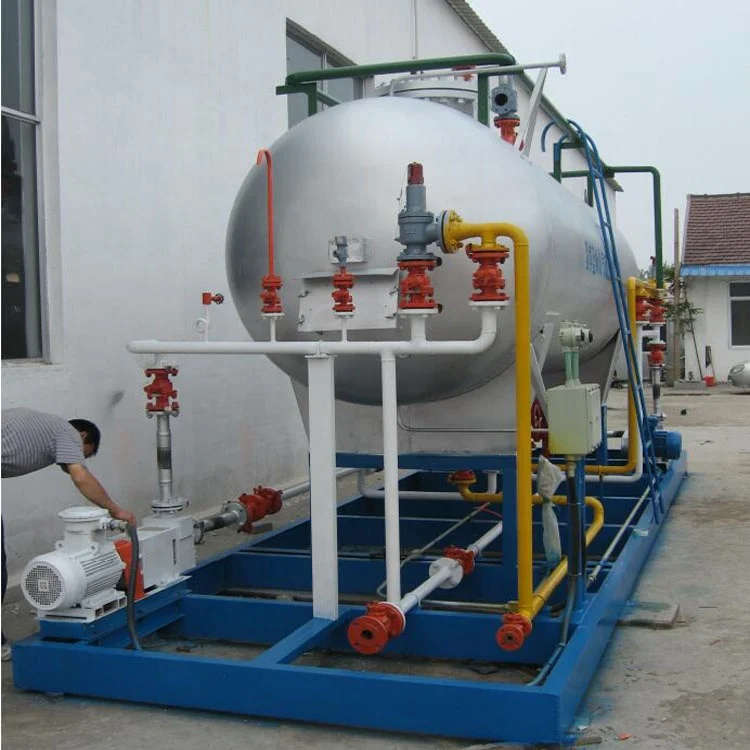The Best Practices of LPG Gas Refill Safety
Wiki Article
Everything You Required to Learn About LPG Gas Refill for Efficient Power Use
LPG gas refill is an essential aspect of energy management for both companies and homes. Understanding its fundamentals can bring about much more reliable use and cost savings. Identifying the correct time to re-fill is necessary, as is making certain safety and security throughout the process. Furthermore, executing best techniques can improve effectiveness. The subtleties of the re-filling process might stun many. Checking out these information can make a significant difference in energy consumption routines.Recognizing LPG and Its Uses
LPG, or melted oil gas, works as a versatile energy source commonly made use of in numerous applications - LPG Gas Refill. This hydrocarbon fuel, mainly made up of lp and butane, is frequently used for home heating, cooking, and powering automobiles. Its performance and mobility make it a favored option for household, industrial, and commercial usesIn homes, LPG is typically utilized in gas stoves and water heating systems, offering a practical alternative to electricity. In the commercial sector, dining establishments regularly rely upon LPG for food preparation and home heating, making sure a constant and dependable power resource. Additionally, LPG serves as an environmentally friendly option for cars, reducing greenhouse gas discharges contrasted to traditional fuels.
LPG is necessary in commercial settings for processes such as steel cutting and as a feedstock in chemical production. Its versatility and performance underscore its relevance as an energy resource in contemporary culture, adding to various industries' operational effectiveness.
Identifying When to Replenish Your LPG
How can one identify the appropriate minute to replenish their LPG supply? When to refill is crucial for maintaining continuous energy use, identifying. One usual approach is to check the use patterns; if cooking or heating times raise noticeably, it might indicate that the LPG storage tank is nearing exhaustion. Furthermore, several LPG storage tanks are equipped with a scale that indicates the remaining gas level. A reading listed below 25% generally signals the need for a refill.Another sensible method entails monitoring the moment given that the last refill. If a family typically uses a particular amount of gas monthly, discovering a decrease in efficiency or longer food preparation times can act as a cue. Lastly, acoustic indications, such as a faint hissing audio or lowered fire elevation, can show low gas levels. Routine checks and awareness of use routines can advertise timely refills, protecting against bothersome failures.
Security Safety Measures for LPG Managing
Making certain security while managing LPG is vital, especially after acknowledging when to refill the gas supply. Proper safety measures can considerably minimize threats connected with gas leakage and potential threats. Individuals need to constantly perform refills in well-ventilated areas, away from open flames or triggers. Utilizing protective equipment, such as gloves and safety glasses, is advisable link to stop injury.Routine inspections of tubes and links for wear or damages are important, as leakages can occur from faulty equipment. It is very important to store LPG cylinders upright in a cool, dry place, away from straight sunshine. Furthermore, maintaining a fire extinguisher nearby and understanding exactly how to utilize it can provide an added layer of safety.
Guaranteeing that all customers are trained in emergency treatments, consisting of evacuation strategies in instance of a gas leakage, is important for maintaining a risk-free environment when dealing with LPG.
Tips for Maximizing LPG Performance
Efficient application of LPG can bring about substantial cost savings and decreased environmental influence. To optimize performance, individuals should ensure that devices are well-kept and on a regular basis serviced. This consists of monitoring for leakages, cleaning up heaters, and replacing damaged parts, which can improve burning effectiveness.Making use of the appropriate size of LPG cylinder for particular needs can likewise improve performance, as smaller cylinders might run out prematurely, bring about waste. In addition, customers should utilize energy-efficient appliances developed for LPG, which are enhanced for lower gas usage.

The Re-filling Refine: What to Expect
Recognizing the filling his comment is here up process for LPG cylinders is necessary for maintaining performance and security in power usage. The process normally begins with the client visiting a designated filling up station, where a trained technician examines the cyndrical tube's condition. If the cylinder is deemed risk-free, the service technician will firmly link it to the refilling device.
During refilling, the specialist monitors the weight to guarantee the cyndrical tube is loaded to the appropriate ability, adhering to safety and security navigate to this site guidelines. It is crucial that the shutoff is firmly sealed prior to and after the refill to protect against leakages.
Once filled, the technician carries out a leak test to verify the integrity of the cyndrical tube and its fittings - LPG Gas Refill. After effective screening, the cylinder is securely detached, and the customer is given with directions for proper handling and storage space. On the whole, the whole refilling procedure ought to take just a couple of mins, guaranteeing minimal disruption for the client
Regularly Asked Inquiries
Just how Lengthy Does a Regular LPG Cylinder Last?
A normal LPG cylinder can last anywhere from a couple of weeks to several months, depending upon use patterns, the size of the cyndrical tube, and the performance of home appliances attached to it. Specific experiences may differ substantially.Can LPG Be Used for Cars?
Yes, LPG can be utilized as a fuel for lorries. Many automotive suppliers offer designs developed for LPG usage, benefiting from reduced emissions and cost-effectiveness contrasted to typical gas or diesel options in different applications.What Are the Ecological Impacts of LPG?
LPG, while cleaner than other fossil gas, still adds to greenhouse gas exhausts. Its burning produces carbon dioxide and can release methane during extraction, positioning dangers to air quality and environment change regardless of reduced particle air pollution.How Is LPG Carried and Stored?
LPG is delivered in pressurized tanks through ships and trucks, guaranteeing safety throughout transit. It is kept in dedicated, well-ventilated locations, typically in big cylinders or storage tanks, to stop leakages and assist in simple gain access to.Exist Alternatives to LPG for Power Usage?
Yes, options to LPG for power use consist of gas, power, solar power, and biomass. Each alternative offers unique benefits and drawbacks, which can affect their viability relying on certain power demands and ecological considerations.
Report this wiki page